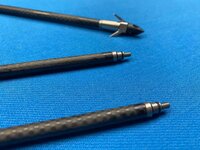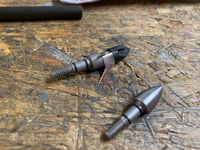Planopurist
WKR
- Joined
- Jul 11, 2017
- Messages
- 531
True. Firenock solves the problem by using a reverse chamfer that centers the insert.isn't every insert that's put in an arrow smaller than the ID of the shaft? So wouldn't that be a problem for all inserts if that really was a problem?
Sent from my iPhone using Tapatalk






